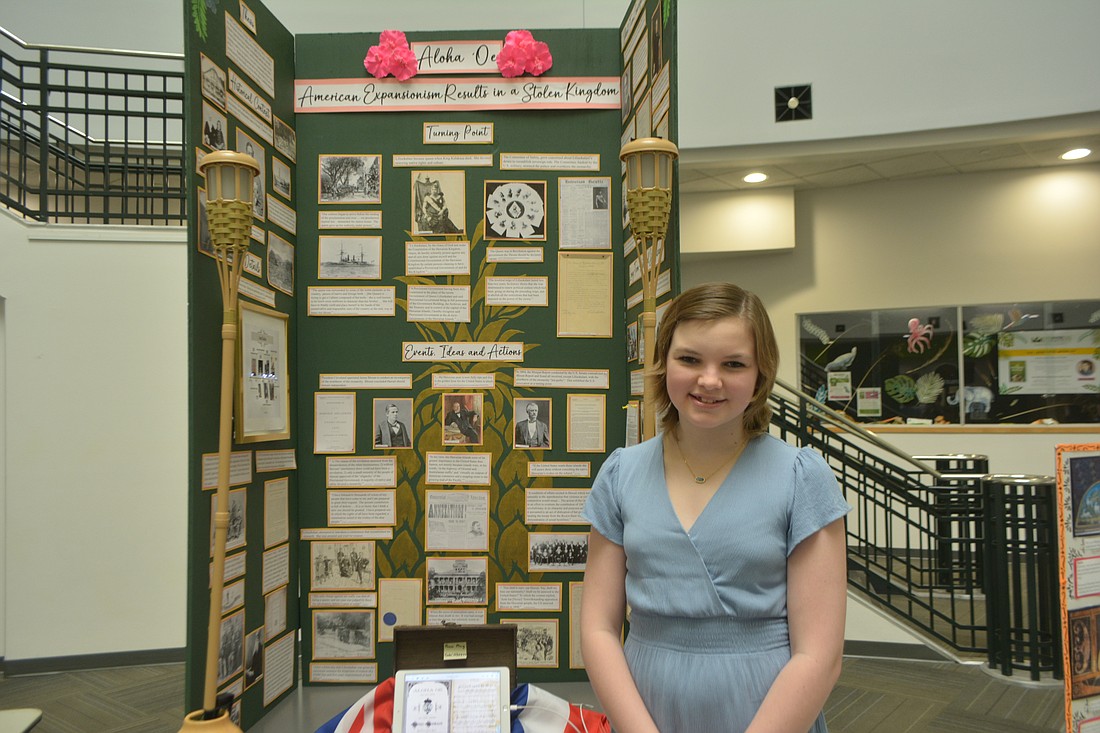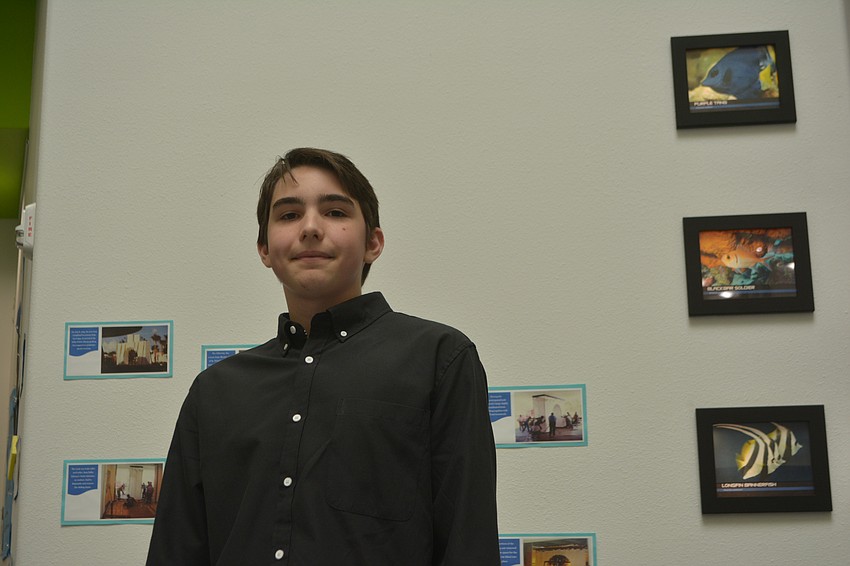- October 23, 2024
-
-
Loading

Loading

Science fair normally gets all the academic exhibition fanfare, but Sarasota County is working to make room for another student-led project showcase: history fair.
The Selby Library Rotunda hosted this year’s Sarasota County History Day Contest entries on Feb. 24. Judges spent the day reviewing exhibits, performances, documentaries, websites and papers from 84 Sarasota County middle school and high school students.
The judges also interviewed each of the students, assessing their ability to represent the county at the Florida History Day Contest, held May 5-7 in Tallahassee. Students who excel in that competition can then represent their schools in the National History Day Contest in June.
Saturday’s competition was just the beginning of the competitive phase of the history contest, for which students began working on their projects in August 2023.
Each year in August, participating teachers in the county “share the annual theme with students and walk them through the projects and how to break them into chunks,” explained Jennifer Jaso, Sarasota County Schools History Day coordinator. Jaso is an eighth grade civics teacher at Sarasota Middle School.
This year’s contest theme was “Turning Points in History.” Students can choose to work solo or as part of a group in one of five categories: paper, website, exhibit, documentary or live performance. Students compete in either the Junior Division (middle school) or Senior Division (high school).
From August until December, the students worked on narrowing down their topics, researching them, constructing their arguments and then building their projects. In December, the students submitted their projects to their classroom teachers for grading and feedback.
Many students begin with broad issues like World War II before scaling them down to more manageable topics of study like Pearl Harbor, said Jaso.
Student entries in the contest included projects on the War of 1812, Ms. Magazine and feminism, and Byzantine church architecture.
“Not only (must students) explain their thesis, but they have to provide evidence to prove it and explain the historical significance — the ‘So what, why should we care?’” said Jaso.
That same question is sometimes aimed at the discipline of history itself.
“(History Day) is about helping students gain a passion and a commitment for continued learning beyond the classroom,” said Jaso. “History Day is the epitome of that. Students get to engage in a process that encourages them to think critically and draw their own conclusions rather than regurgitate from a textbook. It teaches them that their voice and perspective matters.”

The projects also push students to be creative, help them learn how to talk with adults, and give them real experience in determining which sources are reliable and how to account for sources’ bias, said Jaso.
They also learn to ask questions. It’s the essence of history — asking questions and doing the research to find the answers.
“Some students — and adults — don't feel comfortable asking questions. They get a directive and they do it,” said Jaso. “(History) allows students to think critically about the decisions that our leaders make. It sticks with them the rest of their lives.”
Olivia Gambert, 14, began to think critically about how Hawaii became a part of the U.S. after a trip with her family to visit the Hawaiian islands.
“There are still protests there today,” said Gambert.
The Sarasota Middle School student’s exhibit, "Aloha ‘Oe: American Expansionism Results in a Stolen Kingdom," explores the annexation of Hawaii in 1898 and the struggles that preceded it and that have followed.
“A lot of people think Hawaii agreed to (annexation),” said Gambert, who described how Queen Lili'uokalani of Hawaii was overthrown illegally. In 1993, President Bill Clinton signed a resolution of apology acknowledging the overthrow a century earlier.
Gambert won first place in the Junior Division individual exhibit category.
Fellow Sarasota Middle School student Jonathan Rohrbacher, 14, won first place in the Junior Division historical paper category for his project, “The First Use of Chemical Weapons: How the 1915 Battle of Ypres Changed War Forever.”
Rohrbacher said he became interested in the topic after learning about WWI.
The use of chemical weapons in that war would have grave consequences for the future, said Rohrbacher.
Rohrbacher and Gambert will represent Sarasota County at the Florida History Day Contest in Tallahassee, along with their fellow first- and second-place category winners.